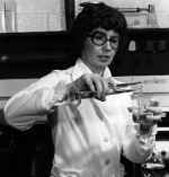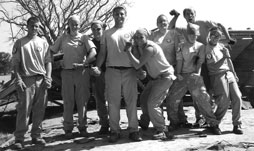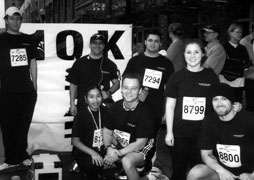1859: Martha Coston used the technology of fireworks to invent maritime signal flares that would aid the North in winning the Civil War. Coston, widowed with four children, found the idea while looking through her dead husband’s notebooks. She learned that his system did not work and figured she could do better. She invented a system of red, white and green pyrotechnic night signals that could be used over great distances. The U.S. Navy soon purchased and implemented her invention. U.S. Patent #23,536
1879: Many may believe the fight against pollution has been underway for only the last 50-70 years. As early as 1879, pollution was considered a major threat to the environment, and inventor Mary Walton was among the first pioneers in the fight against it. Walton developed anti-pollution devices, a method to deflect the emissions being produced into water tanks that could be later flushed into the city’s water sewage. Walton also invented a noise reduction system for New York City’s Metropolitan Railroad in 1891. U.S. Patent #221,880 and #327,422
1905: Mary Anderson invented the windshield wiper. Her goal was to improve the driver’s vision during stormy weather. By 1916, windshield wipers became standard equipment on all vehicles.*
1914: Florence Laurence invented the turn signal, which was called the automobile signaling arm. The arm was attached to the back fender and when the correct button was pressed by the driver, it electronically raised and lowered a sign indicating the driver’s impending action. She also invented the stop signal that attached to the brakes and fender and followed the same premise. Laurence was the daughter of Charlotte Bridgewood.
1917: Charlotte Bridgewood invented the “storm windshield cleaner,” an electricity-based windshield wiper that used rollers rather than blades. It proved not to be a huge commercial success.

1955: Chemist Patsy Sherman was one of a select few women to work for a major corporation when she was hired by 3M in 1952. She was assigned work on fluorochemical polymers. While developing a new kind of rubber for aircraft fuel lines, an assistant accidentally dropped a bottle of synthetic latex she had made. When the mixture spilled on an assistant’s shoe, Sherman discovered the material could not be washed off or removed with solvents. The area also resisted soiling. Sherman and her colleague, Sam Smith, realized the potential of its application to fabrics during manufacturing and by the consumer at home. Scotchgard® was first sold in 1956; however, Sherman and Smith didn’t receive a patent until 1973. U.S. Patent #3,574,791
1956: Bette Nesmith Graham was a single mother working as an executive bank secretary in Dallas. With electric typewriters becoming more common in the workplace, it was very difficult to erase mistakes. Graham, who had longed to become an artist, applied her skills and created “mistake out” in order to correct typing mistakes. Although she had been admonished by some of her bosses, other secretaries asked for bottles of formula to correct their mistakes as well. Graham was fired from her job after she made a mistake she could not correct. This allowed her to begin the Mistake Out Company in her kitchen. She later changed the name to Liquid Paper. **
1966: Physicist Betsy Ancker-Johnson invented the signal generator. The idea was based on her finding that if low-density plasma is established in a piece of semiconductor material in the presence of a high-intensity electric field and low-intensity parallel magnetic field, very high frequency signals may be generated. U.S. Patent #3,287,659
1974: Virgie Ammons invented the fireplace damper actuating tool preventing cold air and dust from blowing down the chimney and into the home. U.S. Patent # 3,908,633

1978: NASA Chemist Barbara Askins created the “method of obtaining intensified image from developed photographic films and plates,” which improved the quality of photographic astronomical and geological images taken by researchers. U.S. Patent # 4,101,780
1997: Sculpture artist Patricia Billings invented Geobond®, a non-toxic, indestructible and fireproof building material while trying to find a way to give her plaster art longevity. Geobond® has been steadily embraced by the construction industry as a replacement for asbestos. Billings was offered a $20 million buyout, but refused to sell her product for fear the technology would be buried by the purchasing company.
1999: Randice-Lisa Altschul was issued a series of patents for the world’s first disposable phone. The phone, made of recycled paper products, is the width of three credit cards and contains about 60 minutes of talk time. Some of Altschul’s previous inventions included the Miami Vice board game and Barbie’s 30th birthday game. U.S. Patent # 5,965,848 and 5,983,094
*In 1923, of the 345 inventions listed under “Transportation” in the Women’s Bureau Bulletin No. 28, about half were related to automobiles and another 25 concerned traffic signals and turn indicators. Among these inventions are a carburetor, a clutch mechanism, an electric engine starter and a starting mechanism.
**Upon her death in 1980, Graham’s son Michael Nesmith inherited her estimated $50 million Liquid Paper estate. Nesmith was a member of the pop-rock band The Monkeys.
Sources: web.mit.edu; inventors.about.com; products.engineering.com


























